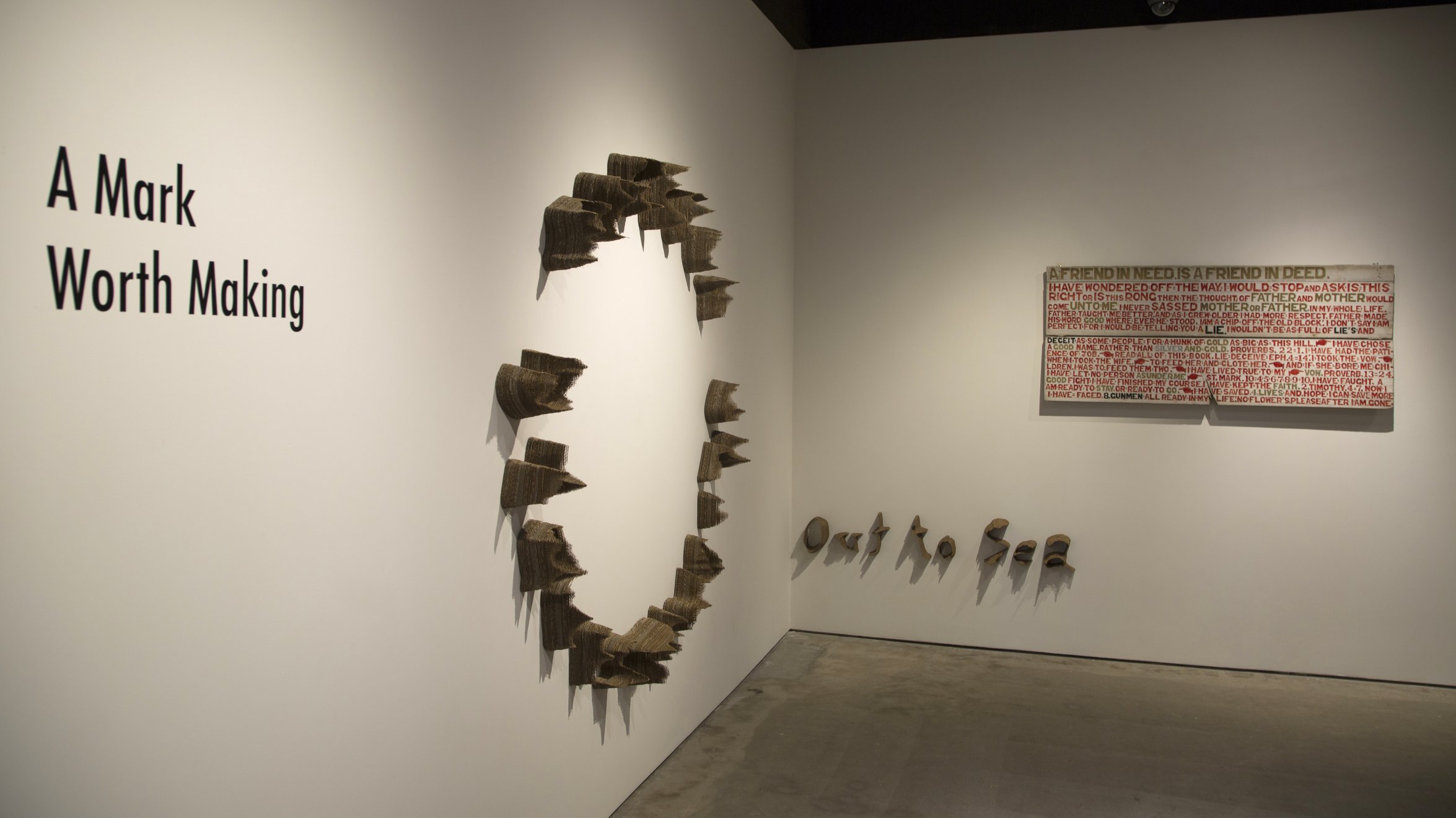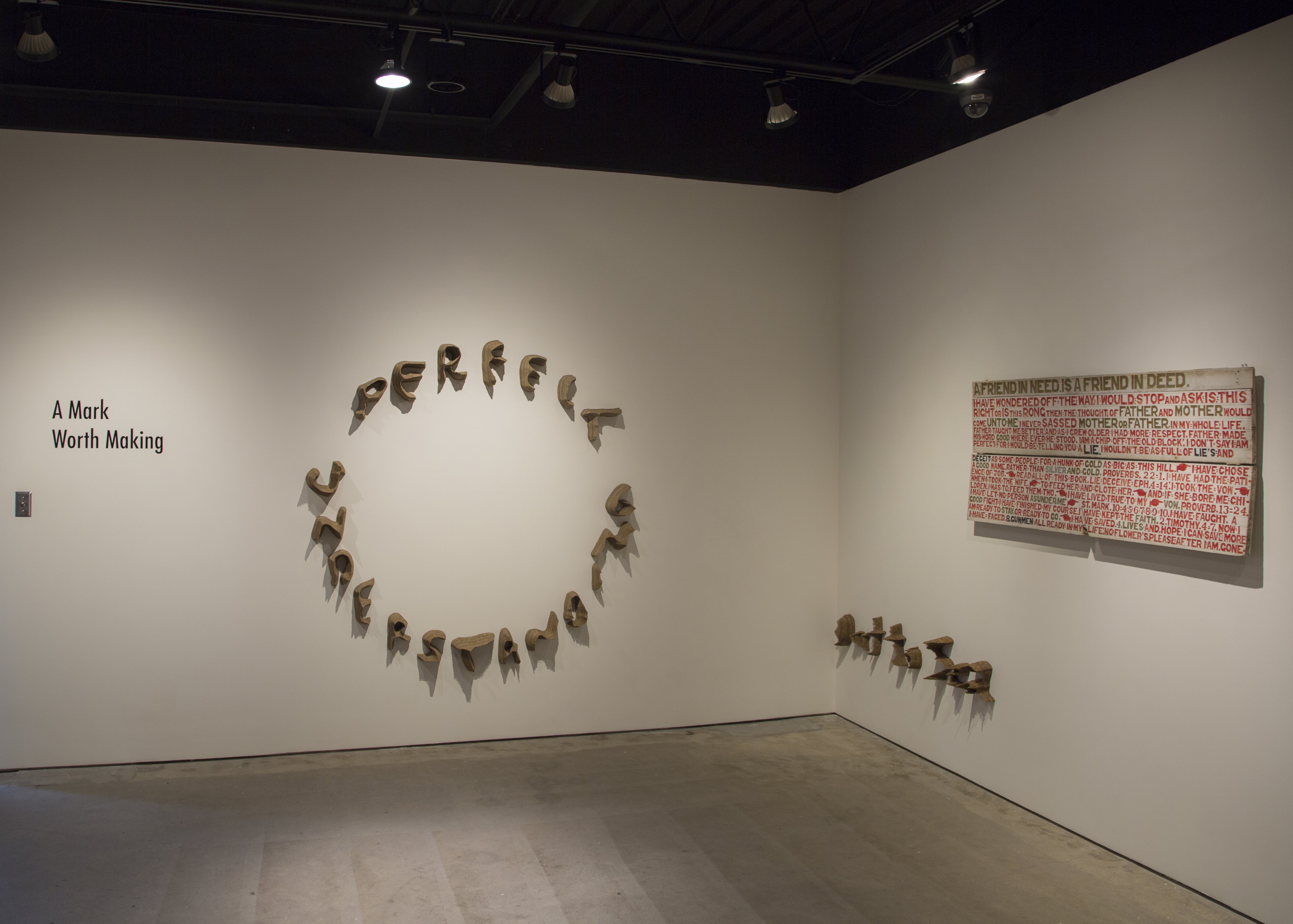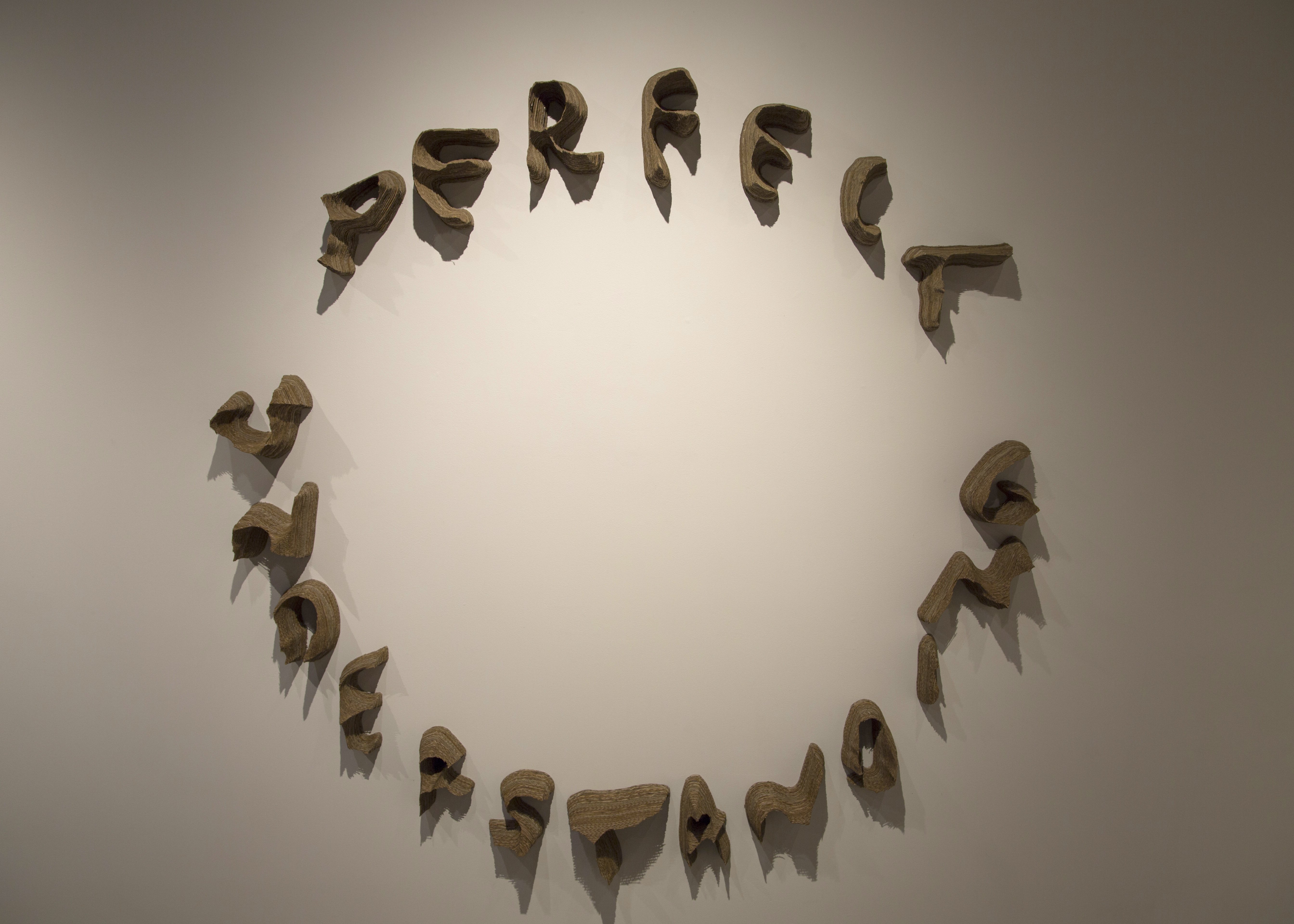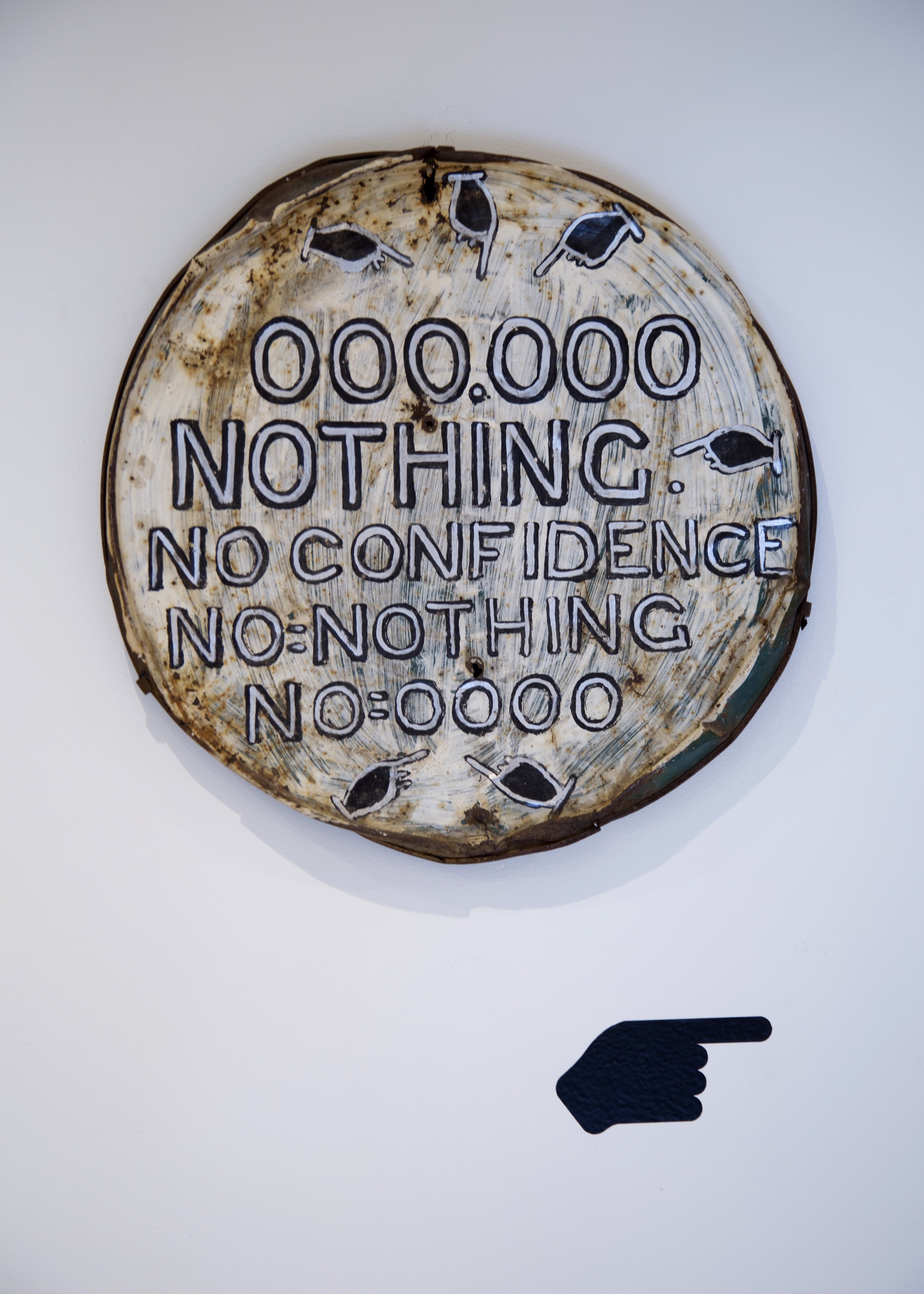
Selections from the Collection: A Conversation with Jesse Howard “A Mark Worth Making”
10.14.2016 - 12.14.2016
A Mark Worth Making features recent work by Kansas City-based artist Neal Wilson whose cardboard sculptures are influenced by the words and signs of self-taught artist Jesse Howard.
The work of both artists explores the use of text to interpret religious and cultural references through meticulous mark-making processes. While Howard used his reference material as a way to understand and judge the context in which he lived, Wilson uses phrases and words pulled out of their original context to create new understandings.
This pairing of artists allows us to compare how each uses process and material to find logic and meaning in words. The symbols, colors, and punctuation throughout Howard’s signs develop into a kind of shorthand—annunciating specific words and producing pauses when reading. The hand carving and meticulous layering found in Wilson’s text landscapes results in objects that invite the viewer to reorient themselves in order for the letters and words to be revealed.
The repetition found in Howard’s paint strokes and Wilson’s individually carved layers become meditative movement in the creation of a whole, nodding towards a new kind of obsessive contemplation for each artist.
Mariah Randell
October 2016
Artists
Neal Wilson has lived in Kansas City, Missouri for 20 years and was adjunct to the West Bottoms art scene of the late 90’s before becoming a baker at Westside’s Fervere Bakery. In 2006 Wilson co-founded HMH Services, a conceptual services conglomerate with his artistic partner Lacey Wozny. He has been director of the Museum of Bottled Water since 2014 and is currently enrolled in the Doctoral Program of the UMKC Economics Department.
Born in Shamrock, Missouri, Jesse Howard (1885-1983) enjoyed a long artistic career of painting signs to hang around his property in Fulton, Missouri. Comprised of letters, symbols, and quotes, hundreds of hand-painted signs commented on everything from local and national politics, religious scripture, current events, and his own biography.
While the local population of Fulton found little to appreciate about Howard’s messages, news of Howard’s environment and signs spread, leading to art world acceptance. His signs are now included in numerous private collections and have been collected and exhibited by a number of museums, including the American Folk Art Museum, NY and the Smithsonian Institution, Washington, DC.


